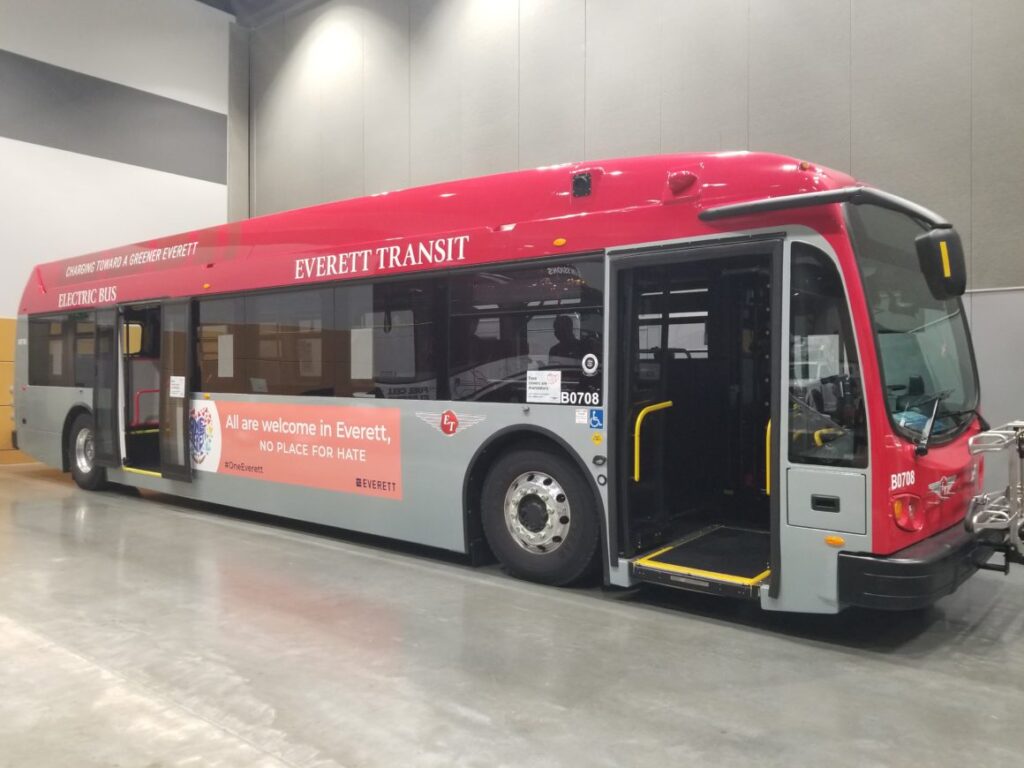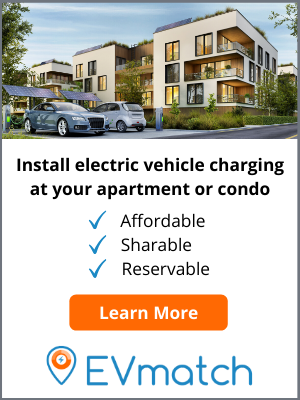Blog
A Focus on EV Clean Fleets – Reflections from the 2021 Green Transportation Summit and Expo
September 1, 2021
Post Author

As we wrap up a fun and productive summer, I am excited to share that last month, I attended the Green Transportation Summit and Expo (GTSE) in Tacoma, WA. This summer, we celebrated 10 years of this critical clean transportation convening event with the theme “Reflecting + Refocusing on a Resilient Future.” This year’s expo was heavily focused on clean fleets.
What originally started as a heavy-duty alternative fuels industry event has evolved into a broader clean fleet conference. The GTSE “focuses on the clean fleet at the intersection of policy, technology, practice, equity, and the future of mobility with a regional focus and national lens.”
For me and the team at EVmatch, this year, we are particularly interested in learning more about the electrification of commercial vehicles, such as municipal and transit fleets, and how transitioning to these fleets can positively impact communities. Because of that, I attended a session titled “Local Governments Role in Decarbonizing On-road Vehicles.” A key takeaway from the session was that electric vehicle fleet managers need to be able to accommodate a variety of different use cases with their charging infrastructure. They are also motivated to have their chargers used as much as possible, even if that requires sharing access across several different groups.
For example, Level 2 EV charging infrastructure for municipal buses (mostly nighttime charging) could be coupled with municipal employee workplace charging (mostly daytime charging) for increased utilization. While some complexities around physical access and siting persist, entities are certainly thinking up creative solutions (e.g. physically placing charging infrastructure along a fenceline to allow public access to infrastructure within a municipal bus yard). There were also ideas about deploying city-owned EV charging infrastructure at park-and-rides and creative ways to make charging infrastructure available to high-mileage rideshare drivers, who often drive 30,000+ miles per year! Shared and scheduled access were key requirements for all deployments, highlighting the growing need for sophisticated charger scheduling software, like what EVmatch has to offer.
Another session I was eager to attend was “Utility EV Programs”, where I heard Angela Song, James Campbell, and Cam LeHouillier speak about their EV programs at Seattle City Light, PacifiCorp, and Tacoma Power, respectively. The utility programs discussed were diverse, ranging from residential Level 2 direct install programs, utility-owned DC fast charging infrastructure deployments in urban villages, and bus charging pilots at transit hubs.
An important key takeaway was the need for public participation in planning processes and community involvement in electric vehicle supply equipment (EVSE) siting, especially assets in the public right-of-way.
Without full participation and input from community stakeholders, EVSE infrastructure programs were less successful and even received public backlash, as charging infrastructure was viewed as a tool for and symbol of gentrification. Angela Song from Seattle City Light noted the importance of “considering those not in the room” when these programs and policies are being developed.
I’d argue that we need to even go a step further and work towards full “procedural justice,” which is one of the multiple dimensions of environmental justice. According to Ana Isabel Baptista in The World We Need, “procedural justice seeks fairness and access to participation in decision-making processes that shape environmental justice conditions.” In addition to more commonly discussed “distributive justice”, Angela’s comments highlighted how procedural justice is a critical aspect to the success of electric mobility programs.
And based on my observations of who was in the room at GTSE, there’s clearly a lot of work to be done.
As I boarded my flight home to California from GTSE 2021, I reflected on the exciting and creative ways in which EV fleets and infrastructure programs are unfolding, but also on the immense amount of work and smart ideas that will be needed over the coming decade to truly transform our transportation infrastructure and economy.
When I think about how EVmatch can support our communities in remaining laser focused on a resilient future, I am encouraged by our recent and upcoming work aimed at increasing access to electric vehicle charging for hard-to-reach communities. As high utilization of fleet charging assets and community participation become increasingly important to governments and fleet owners, our work is ever more pressing. EVmatch’s community-based platform and services are well positioned to serve the growing and complex needs of e-mobility fleet and charging programs, and have a critical role to play in the puzzle.









